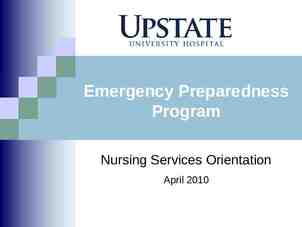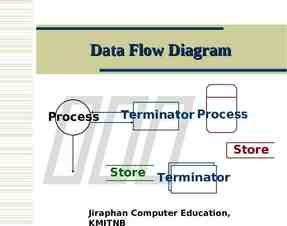CURRENT POLICIES GOVERNING THE USE OF LANGUAGE IN PHILIPPINE PUBLIC
16 Slides714.00 KB
CURRENT POLICIES GOVERNING THE USE OF LANGUAGE IN PHILIPPINE PUBLIC SCHOOLS OFELIA H. EUSTAQUIO Education Program Specialist II Bureau of Elementary Education Department of Education PHILIPPINES
I. INTRODUCTION Republic of the Philippines archipelago made up of 7,107 islands, located in Southwest Pacific Ocean has land area of 298,170 sq. km., terrain mostly mountainous population of 91,077,287 (2007) Map 1 – The Republic of the Philippines
I. INTRODUCTION Republic of the Philippines local languages across country are numerous and serve purpose of daily living and interactions with others use of many languages in daily life is normal and widely accepted at present and by consensus, Tagalog-based Filipino is widely understood and used in all domains of life
II. A. MAJOR LANGUAGES OF THE PHILIPPINES Regional Languages Ethnologue reports 171 living languages spoken by different ethno-linguistic groups Belves reports eight are major languages 1. 2. 3. 4. 5. 6. 7. 8. Bikol Cebuano Hiligaynon Ilokano or Iloko Kapampangan Pangasinan or Pangasinense Tagalog Waray or Samarnon
II. MAJOR LANGUAGES OF THE PHILIPPINES A. Regional Languages Philippine languages divided into subgroups, first three groups considered to be closely related to each other: Northern Philippine languages Meso Philippine languages Southern Philippines language Other three groups are more distantly related to the above languages Southern Mindanao languages Sama-Bajaw languages Sulawesi languages
II. MAJOR LANGUAGES OF THE PHILIPPINES B. National Language Executive Order 134 (1937) proclaimed adoption, development and use of national language Nat’l. Language Institute (1936) recommended Tagalog as basis of national language Use of “Pilipino” as official name of national language declared (August 13, 1959) through Department of Education Order No. 7 1987 Constitution of the Republic of the Philippines mandates that national language is “Filipino” and further provides that for purpose of communication and instruction, official languages are Filipino and until otherwise provided by law, English
III. CURRENT LANGUAGE-IN-EDUCATION POLICIES The Legal Basis 1987 Constitution of the Philippines Department Order No. 53, s. 1987 – “The 1987 Policy of Bilingual Education” aims for achievement of competence in both Filipino and English Goals of the bilingual education policy: 1) enhance learning through two languages to achieve quality education; 2) propagate Filipino as language of literacy; 3) develop Filipino as linguistic symbol of national unity and identity; 4) cultivate and elaborate Filipino as language of scholarly discourse, i.e. continue its intellectualization; and 5) maintain English as international language and as non-exclusive language of science and technology.
III. CURRENT LANGUAGE-IN-EDUCATION POLICIES Bilingual education means separate use of Filipino and English as media of instruction in different subject areas Filipino is used in Social Studies, Social Sciences, Music, Arts, Physical Education, Home Economics, Practical Arts and Character Education English is used in Science, Math and Technology subjects Use of English and Filipino as media of instruction starting Grade I in all schools Use of vernacular in locality or place where school is located and was prescribed as auxiliary to media of instruction but only when necessary to facilitate understanding of concepts being taught in English, Filipino or Arabic, as case may be
III. CURRENT LANGUAGE-IN-EDUCATION POLICIES DECS Order No. 11 s. 1987- “An Act Granting Priority to Residents of the Barangay, Municipality or City where the School is Located, in the Appointment or Assignment of Classroom Public School Teachers” which allows use of local language specifically where local culture should be enhanced in cultural communities Executive Order No. 210 (May 17, 2003) - “Establishing the Policy to Strengthen the Use of the English Language as a Medium of Instruction in the Educational System” so DepEd Memorandum No. 181 s. 2003 issued provides that English language be used as medium of instruction to develop aptitude, competence and proficiency of students in the language, to maintain and improve their competitive edge in emerging and fast growing local and international industries, particularly in area of Information and Communication Technology (ICT)
IV. IMPLEMENTATION OF THE EDUCATION POLICY BILINGUAL A. Early Childhood Education Filipino and English used as media of instruction for 5-year old children in preschool education Next dominant languages learned are Filipino and English producing childhood bilingualism through classroom activities In non-Tagalog areas, teachers translated Filipino and English words to local language, children answered in mixed language
IV. IMPLEMENTATION OF THE EDUCATION POLICY BILINGUAL B. In the Primary Grades Children used Filipino in learning Civics and Culture (Sibika at Kultura) in Grades I-III, Geography, History and Civics (Heograpiya, Kasaysayan at Sibika) in Grades IV-VI, Makabayan which includes Character Education, Music, Arts and Physical Education in Grades I-VI, Home Economics and Livelihood Education (Edukasyong Pangtahanan at Pangkabuhayan) in Grades IV-VI Filipino and English learned as subjects in all grade levels Children learned Mathematics (Grades I-VI) and Science (Grades III-VI) in English
IV. IMPLEMENTATION OF THE EDUCATION POLICY BILINGUAL B. In the Primary Grades Teachers believed that use of Filipino as medium of instruction promotes oneness in thought as nation and pride in being Filipino, preserves cultural and national identity promotes development of reading skills because Filipino is language of mass media which most children have access to Children were observed to learn Filipino easier because of regular transparent orthography and mother tongues of children have Filipino vocabulary
IV. IMPLEMENTATION OF THE EDUCATION POLICY BILINGUAL B. In the Primary Grades Learning of English supported by most teachers and parents Early exposure of children to sounds (phonology and semantics) of English language promoted familiarization Enhanced by educational programs in radio, television and print materials which were widely present in many environments In classrooms, more reading materials in English are available than Filipino and in different learning areas
IV. IMPLEMENTATION OF THE EDUCATION POLICY BILINGUAL B. In the Primary Grades Lingua Franca Education Project (1999-2003) aimed at defining and implementing national bridging program to develop initial literacy all subjects in Grade I were taught in lingua franca including reading readiness and beginning reading Filipino was taught orally Oral English was introduced in second semester Schools were given the option to select which lingua franca to use: Tagalog, Cebuano or Ilocano Results showed that reading in first language developed self-confidence and facilitated smooth transfer of learning from first language to second language
IV. IMPLEMENTATION OF THE EDUCATION POLICY BILINGUAL B. In the Primary Grades Study in Basic Education Reform Agenda (BESRA) in 2005 showed that abilities of Filipino children to transfer literacy skills from Filipino to English were demonstrated in word reading/decoding abilities But lack of linguistic or language competence compromised English language performance because it lacked direct route to sentence comprehension Conclusion Filipino learners have better opportunities of becoming proficient in two languages, Filipino and English Use of mother tongue should be strengthened in early years of education (Preschool, Grades I and II) so that development of critical thinking abilities could be strengthened
Thank you





















